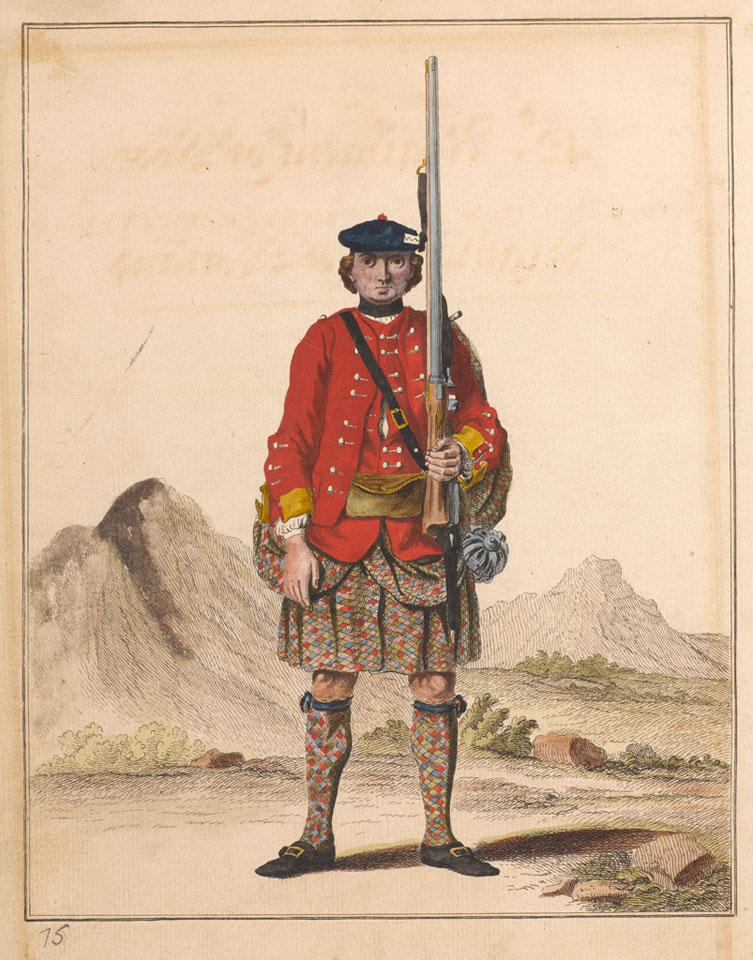
Online Collection
« Prev - 1 of 1 results - Next »
'42nd Regiment of foot', 1742 (c)
Engraving from, 'A Representation of the Cloathing of His Majesty's Houshold and of all the Forces upon the Establishments of Great Britain 1742', a volume of 104 coloured engravings, published 1742 (c).
In the aftermath of the 1st Jacobite Rebellion of 1715, Independent Companies of militia were raised from loyalist Highland clans for policing and peacekeeping duties. These companies were commonly known in Gaelic as 'Am Freiceadan Dubh', or 'The Black Watch', due to their unpopular nature and their dark green government-issue tartan - the regiment wore kilts as part of its everyday uniform until 1940.
In 1739 King George II ordered that four more of these companies be raised and that all the companies be merged into a single line infantry regiment.
During the War of the Austrian Succession (1740-1748), the regiment impressed the Duke of Cumberland with its Highland style of fighting at Fontenoy in 1745. Later that year it was sent back to guard southern England against invasion, with one company being sent north to fight the Jacobites at Culloden. In 1747 it was given a numerical ranking as the 43rd Foot, rising to the 42nd two years later when the previous 42nd was disbanded.
The 42nd (Royal Highland) Regiment fought in the French and Indian Wars in North America before defeating George Washington at the Battle of Long Island in 1776 during the American War of Independence (1775-1783). It served in both Egypt and Spain during the Napoleonic Wars and was mentioned in despatches for its service at Quatre Bras and Waterloo (1815).
NAM Accession Number
NAM. 2004-10-87-75
Copyright/Ownership
National Army Museum, Out of Copyright
Location
National Army Museum, Study collection
Object URL
https://collection.nam.ac.uk/detail.php?acc=2004-10-87-75

